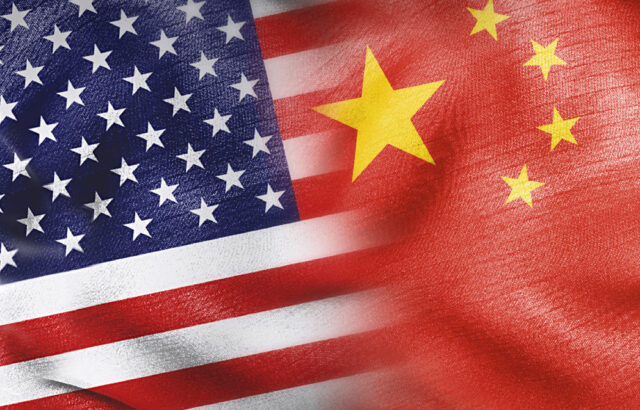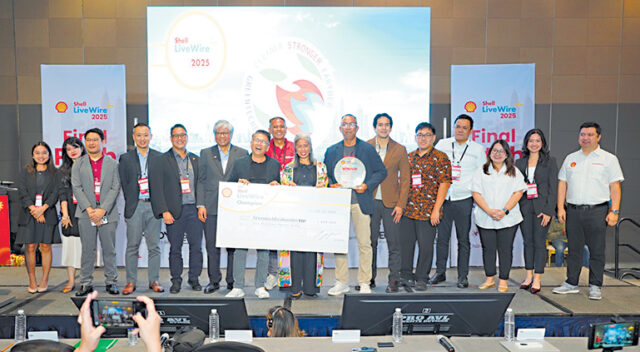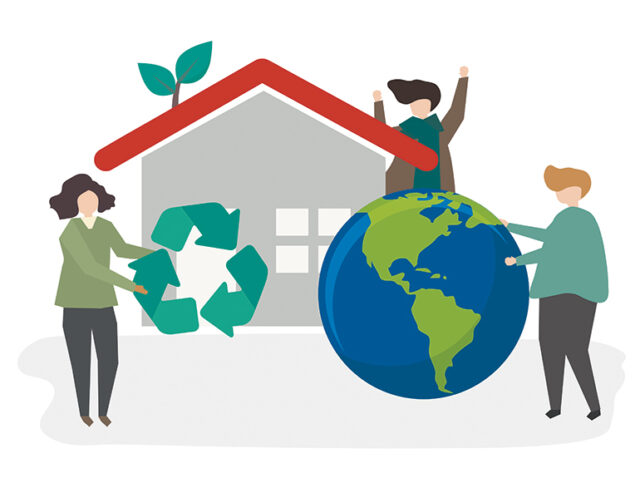Global finance chiefs wait on Trump and Xi as trade war simmers
AFTER A WEEK of talks dominated by trade spats and geopolitical distrust, finance chiefs were once again left hanging on the outcome of a potential meeting between the leaders of the world’s two largest economies.
In Washington, the mood at World Bank and International Monetary Fund (IMF) gatherings was a mix of relief that US President Donald J. Trump’s tariffs hadn’t caused a deeper slowdown and dread about the risks ahead.
Policymakers left town hoping that Mr. Trump and Chinese President Xi Jinping will meet at the end of the month, resigned to the reality that the outlook for the global economy is at stake.
The meeting coincided with some of the harshest rhetoric between Washington and Beijing in Mr. Trump’s second term, as both sides flexed their dominance with export controls in key industries — the US with advanced technology and China with its rare earths reserves.
While the anxiety mostly played out behind the scenes, with few officials willing to publicly opine on the power play, the IMF’s chief urged policymakers not to panic. IMF Managing Director Kristalina Georgieva suggested the lack of retaliation against US tariffs was helping to keep subpar global growth from collapsing.
“Our message to everybody is: Be calm,” she said in an interview on Thursday with Bloomberg Television. “And to China: Be careful, do not provoke other countries to see you as a threat to their economies.”
US Treasury Secretary Scott Bessent and China Vice Premier He Lifeng are expected to this next week to negotiate down recent escalatory measures — after Bessent upbraided a Chinese negotiator during a press conference earlier last week, describing him as “unhinged” and perhaps having “gone rogue.”
The discussions will come ahead of a potential meeting between their two presidents in South Korea on the sidelines of the Asia-Pacific Economic Cooperation leaders summit.
Earlier last week, Georgieva warned that countries “shouldn’t be complacent” given mounting fiscal and spillover concerns. Global public debt is on track to exceed 100% of gross domestic product by the end of this decade — its highest since 1948. Argentina is suffering from a depressed currency and is poised to get a $20 billion lifeline from the US.
Meanwhile, equity markets hovering near records were whipsawed all week by the latest trade drama.
AI EUPHORIA
Underpinning the recent rally are shares of US artificial-intelligence chipmakers, which fed into a drumbeat of warnings from central bankers and supervisors about high asset prices, potential complacency in financial markets and the risk of a sudden, sharp correction.
Some, including the IMF’s Georgieva and a former official at the Washington-based fund, drew comparisons with the dot-com bubble that burst in 2000. “I wouldn’t immediately agree with this opinion, but it’s something we need to watch,” European Central Bank Governing Council member Joachim Nagel said Friday.
Analysis by Bloomberg Economics found that a renewed trade war between China and the US, coupled with the threat of an AI bubble that eventually bursts poses a $1.4-trillion hit to world growth.
The mood was less grim than when officials last gathered in Washington in April, just weeks after Trump announced the biggest round of tariff hikes since the 1930s. But the fresh escalation of tensions put a lid on any optimism, said Josh Lipsky, senior director of the GeoEconomics Center at the Atlantic Council in Washington and a former adviser at the IMF.
“There’s this strange dichotomy between feeling better than they did in April and yet being very worried about all the risk, which could become a tipping point at any moment,” Lipsky said. “That tension played out throughout the week in a mixture of relief and anxiety combined.”
That subdued spirit was backed up in the IMF’s forecasts for 3.2% world growth this year and 3.1% next — both well below the historical average of about 3.7%. If trade risks materialize, global growth could be lower by 0.3 percentage point, Krishna Srinivasan, the IMF’s director of the Asia and Pacific Department, told Bloomberg TV’s Haslinda Amin.
By week’s end, though, there were signs that Trump and Xi would meet and iron out some differences. That’s the hope of rich and poor economies caught in the middle, with big stakes in ensuring the dispute doesn’t widen.
“We are monitoring the situation very closely,” German Finance Minister Lars Klingbeil said. “I am now somewhat hopeful that much can be resolved at the meeting between President Trump and President Xi.”
RARE EARTHS
While in Washington, Chinese officials tried to ease concerns over an expansion of restrictions on rare earths — minerals critical to many industries — in an attempt to soften an international backlash. Chinese delegates told their global counterparts that tightened export controls will not harm normal trade flows, according to people familiar with the matter.
Klingbeil said Germany made it clear during Group of Seven talks this week that “we disagree with China’s approach, and we will monitor the situation very closely in the hope that we can do what we can politically to ensure that there is no escalation, but rather a détente between the US and China.”
For monetary policymakers, the concern centers around their goals to control inflation, avoid sharp currency moves and sustain growth through trade dislocations.
South Africa’s central bank governor, Lesetja Kganyago, said tensions between the US and China could push prices lower in other countries at the expense of their own manufacturers.
“The interesting thing about that spillover is that it could actually depress prices elsewhere and initially it might be beneficial,” Kganyago said. “And it might actually end up looking like dumping or something along those lines.”
The combination of trade and geopolitical tensions combined with financial fragility could yet trigger market turmoil, People’s Bank of China Governor Pan Gongsheng warned during meetings of Group of 20 financial chiefs and central bank leaders.
Such uncertainty, according to the IMF, is a permanent fixture that will require policymakers to stay vigilant and flexible. “The reality is people are both resilient and creative and you figure out ways how to compensate things,” Pakistani Finance Minister Muhammad Aurangzeb said. — Bloomberg














